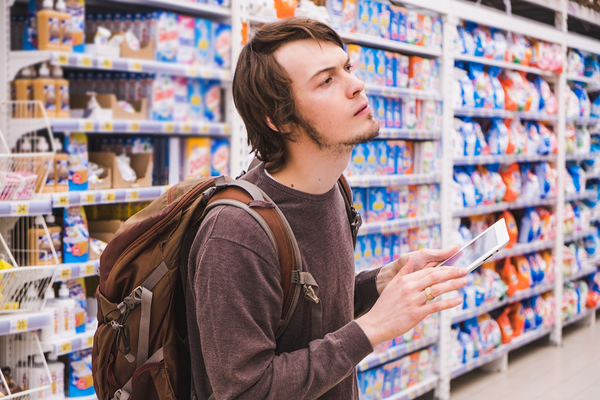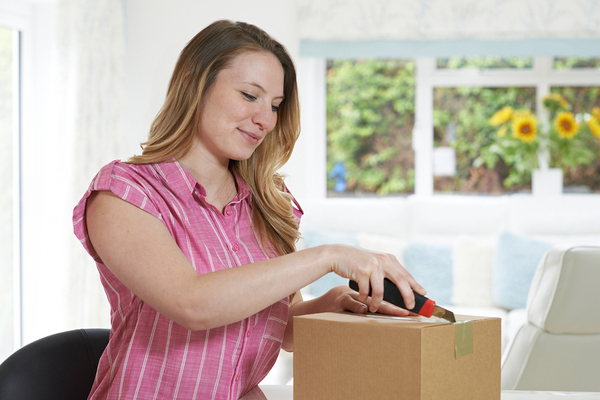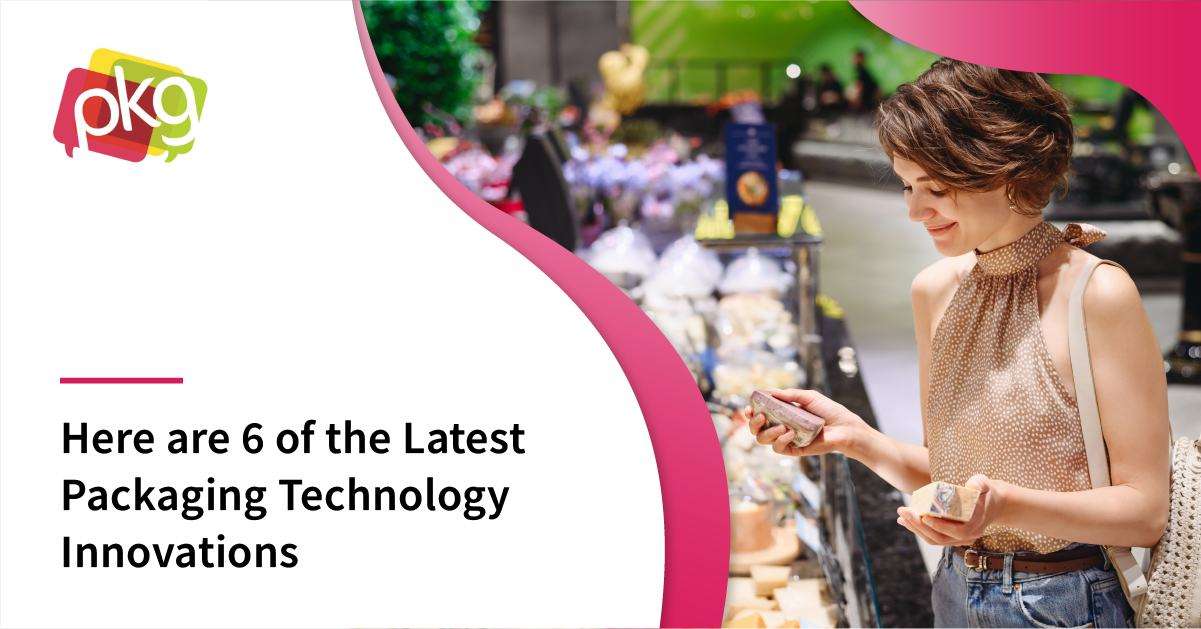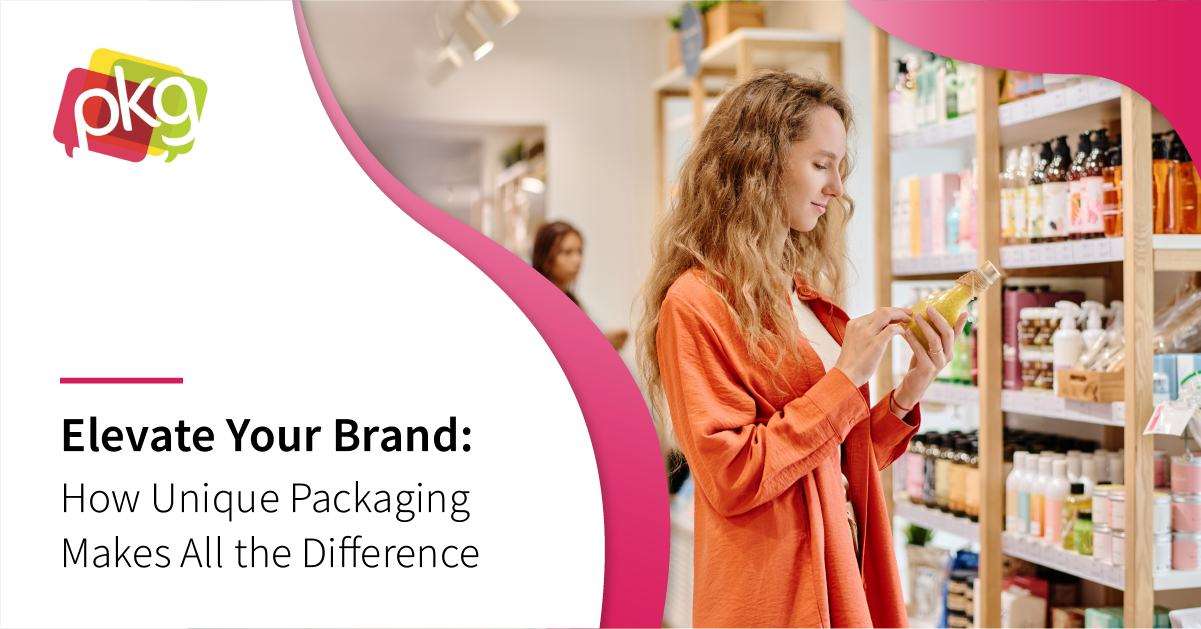Your choice of packaging material for your CPG products should never be an afterthought.

Much is expected of today’s packaging materials, and brands are expected to be in the know, choosing packaging with many factors in mind including safety, functionality, sustainability, and shelf appeal. Additionally, packaging choices can be an immensely important aspect of a brand’s marketing strategy. Today’s packaging designs aren’t only about containing or protecting a product, but also about conveying information, heightening consumer expectation, and then delivering what consumers expect.
The type of CPG product will, of course, influence the type of packaging chosen. Food products, for instance, must be packaged in conformity with numerous safety regulations. And while many CPG products don’t have to adhere to the strict safety regulations that food products do, nonetheless, people expect the packaging to be safe, functional, and attractive.
And underlying all CPG packaging types is a growing concern with sustainability. Environmental and social responsibility are important branding traits, particularly to younger consumers. Here are the key considerations that matter when you choose your CPG packaging materials.
Functionality and Safety in Food Packaging
The packaging that contains food products must never cause adverse reactions with the product inside. It cannot cause toxicity or catalyze reactions within the food product, neither can it cause migration of toxic substances from packaging to food. Food packaging should accomplish four objectives:
- Containment of the food product
- Preservation and protection of the food from physical and biochemical changes, air, water, light, and other materials
- Effective marketing of the product contained within
- Convenience of use to the consumer
The comprehensive regulatory status of food packaging material is determined by the regulatory status of all individual substances that make up the product. Under FDA rules, it is the manufacturer’s responsibility to ensure that all packaging materials that contact food comply with all specifications. If safety and regulation requirements for packaging food products are not met, then all other considerations are non-starters. Food safety is the first and foremost consideration.
Food Packaging Design and Brand Marketing
Though containment and safety take top priority in food packaging designs, that isn’t to say that marketing and branding don’t matter. They certainly do! The right packaging choices help establish brand identity and convey significant information about your business and values. It can be designed to appeal to a target audience through the use of color, text, shape, and method of opening and closing.
Most of all, however, branding elements displayed through food product packaging must make promises that the product actually delivers. A consumer may be fooled once by great packaging on an inferior product, but they won’t make the same mistake twice.
Another aspect of branding and marketing that must be considered is its shelf-readiness. Not only does strong shelf-readiness make things easier on those who stock the products, neatly-shelved food products are more appealing, reflecting well on both the brand itself and the retailers that carry it.
Pricing Packaging for Nonfood CPG Products

CPG products encompass far more than foods, of course. Health and beauty items, cleaning supplies, and utensils are just a few of the many CPG products that must consider the importance of packaging design. The cost of packaging materials is of critical importance so that profit margins can be maintained. But cost must be considered from many angles, including how well various packaging materials hold up during transport and delivery, and during storage.
As with food products, quality and functionality matter with non-food CPG products. However innovative or artful packaging may be, it won’t matter if it doesn’t protect products on their trek from manufacturer to the consumer’s home. Therefore, it’s important to weigh cost and quality to avoid the problem of having to replace damaged shipments.
Another cost consideration is that of using standard sizes versus bespoke sizing. Standard sizes, in general, offer more flexibility and convenience during transportation, handling, and storage, plus they’re more cost-effective in most instances. Enhancement of visual impact can often be accomplished in other ways than with non-standard packaging sizes, such as with bold labeling design.
Distribution and Storage Considerations
Choosing the right packaging materials requires a keen understanding of the product’s lifecycle from production unit to storage, distribution, retail shelf, and the consumer’s home. How far the shipments must travel, the types of transportation used in transit, as well as storage conditions at various stages of the product lifecycle should all influence the choice of packaging material so that products ultimately arrive in consumer homes undamaged and fresh looking.
Ideally, packaging materials should work with, and not against, the efficiency of the packaging plant. That means using materials that are compatible with the machinery available, as well as working with packaging material suppliers who thoroughly understand your needs. Strong packaging supplier relationships can forestall problems and make correction of unexpected problems faster and less stressful.
E-Commerce Packaging and Convenience
CPG categories experiencing impressive year-over-year growth in e-commerce are:
- Adult nutrition
- Deodorant
- Health snack bars
- Toothpaste
- Laundry detergent
Furthermore, many consumers now purchase these products on a subscription basis, so they don’t risk running out. But even products purchased by subscription are expected to deliver certain features. Packaging should be practical, size-appropriate, and easy to store, and if it’s also innovative (such as snack pouches that stand up on their own and can be re-sealed easily), then so much the better.
Despite the automatic nature of e-commerce subscriptions to CPG products, consumers have a sense of these items being “made for me,” and even the most jaded e-commerce shopper can feel a little jolt of happiness when a shipment comes in, right on time, delivering exactly what is expected.
The Consumer Unboxing Experience
The “unboxing” experience may not be as exciting for a pack of replacement pucks for a toilet wand cleaner as it is for a new smartphone, but that doesn’t mean it isn’t important. Whatever the product inside, consumers interact with both primary and secondary packaging, which drives a sense of anticipation: Is it the correct product? Is it in pristine condition? Does it make me want to continue my subscription (if it’s a subscription item)?

CPG brands that have a strong presence in the e-commerce sector aren’t just delivering an experience that must compare with the consumer’s typical in-store retail experience. It must compete, on some level, with the experiences a consumer has had unboxing deliveries of all types. By providing an unboxing experience that is, at worst, predictable and unobtrusive, and at best, delightful and engaging, CPG brands can engage with consumers one-on-one, in their homes, and that is a relationship that has value and should be sustained if at all possible.
Enjoying what you're reading? Enter your information below for two more valuable tips to improve your packaging design and attract consumer interest.
Sustainability and Sourcing of Packaging Materials
It’s becoming easier for CPG brands to source sustainable materials and incorporate them into packaging designs. There are countless ways to increase sustainability, too. One way is to choose providers who reduce or eliminate the use of toxic chemicals so that the packaging is friendlier to the ecosystem. Another way can be to choose “lean” flexible packaging that cuts down on transportation costs as well as greenhouse emissions due to transportation.
Choosing packaging materials that are easy for consumers to recycle locally can increase consumer goodwill toward a brand and strengthen their loyalty. Rare is the consumer today who doesn’t care about packaging sustainability or who prefers over-packaged products that are needlessly hard to unpack and that produce large amounts of waste packaging.
Brand Benefits of Sustainability
Choosing packaging materials with sustainability in mind is not only good for customer relations, but it's good for your brand itself. For one thing, you can reduce your carbon footprint—a fact you can measure and communicate to your customers.
Moreover, sustainable packaging is about efficiency, and that often translates into space efficiency. The same warehouse space will go further, and more product can be shipped in the same volume of transport space. Less packaging also means more product units on the shelf, which benefits retailers too.
Finally, sustainable packaging materials are often of lighter weight, conferring cost-efficiency on both packaging costs and shipping costs. Brands with strong e-commerce presences can benefit even more, saving money on the cost of shipping to consumers and saving money with product returns. Sustainability isn’t something that happens overnight. Rather, it requires a strategy and commitment. But the ROI and increase in consumer perception of brand value make the commitment well worth the effort.
When you have a great CPG product, it’s important not to dilute its greatness by choosing ill-conceived or inconvenient packaging materials. Even the most ordinary household products involve a certain level of “unboxing,” even if it’s just taking an item from the shopping bag and placing it in the cupboard. Choosing the right packaging material for your CPG products requires considering functionality and safety, plus adherence to safety regulations for food products. It also requires smart pricing strategies, consideration of storage and distribution and the conditions that products experience during those phases.
Companies that have a strong e-commerce presence must consider things like shipping weight, product protection, and the consumer unboxing experience. And products across all categories are increasingly turning their attention to improving sustainability, not only as a branding tactic, but also as a practical way to increase efficiency and reduce costs.
PKG Brand Design is always on the forefront of new CPG branding and packaging initiatives; please subscribe to our blog for the latest package design industry news!







